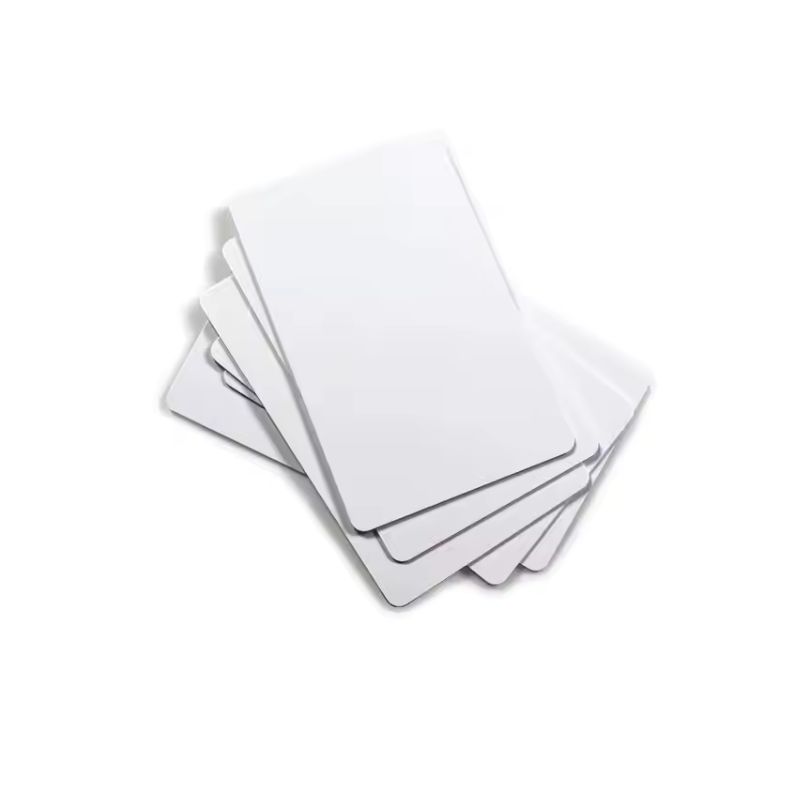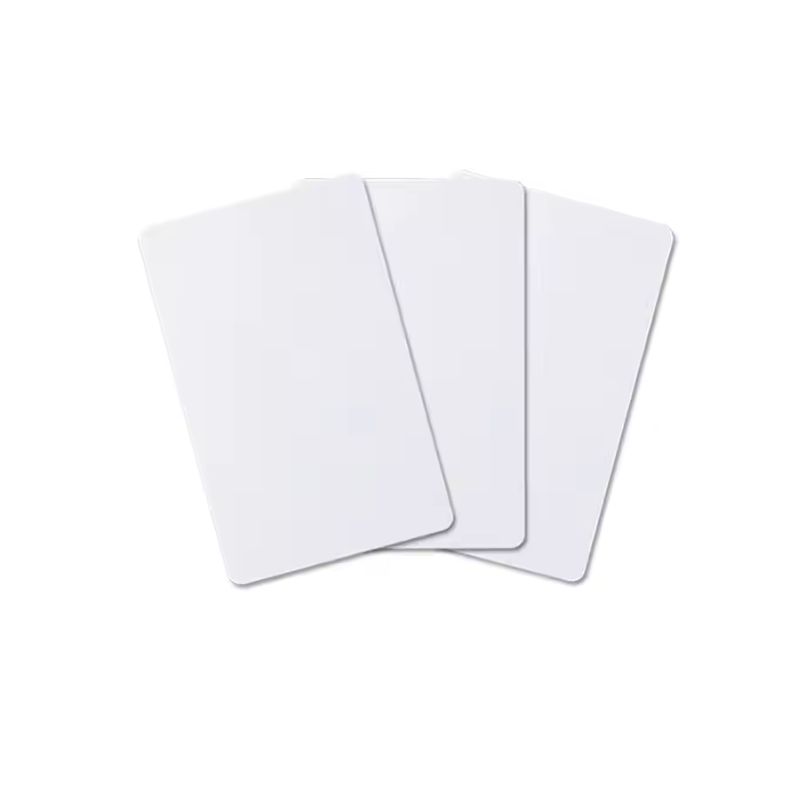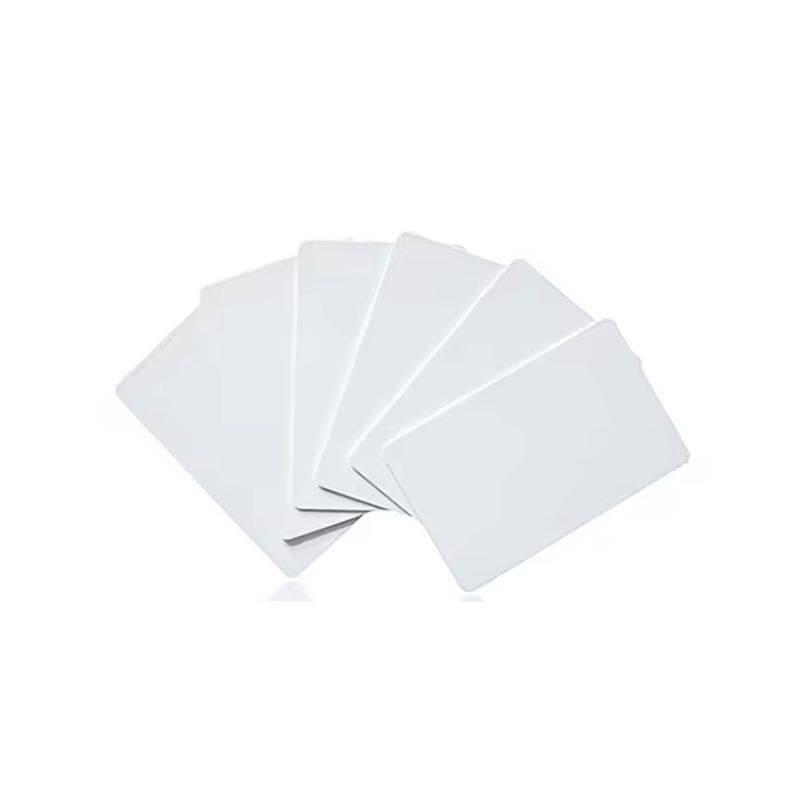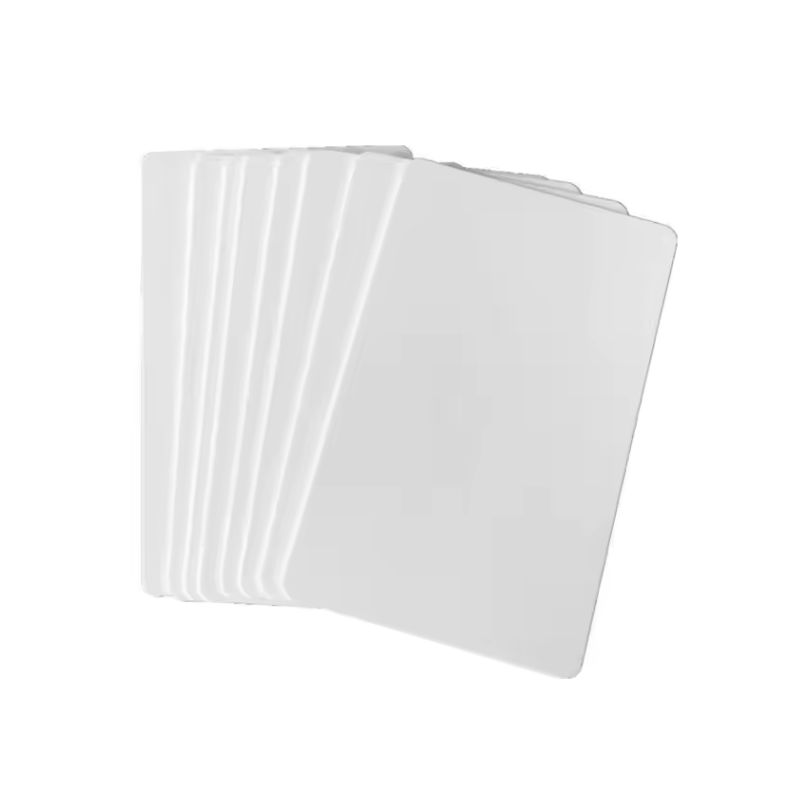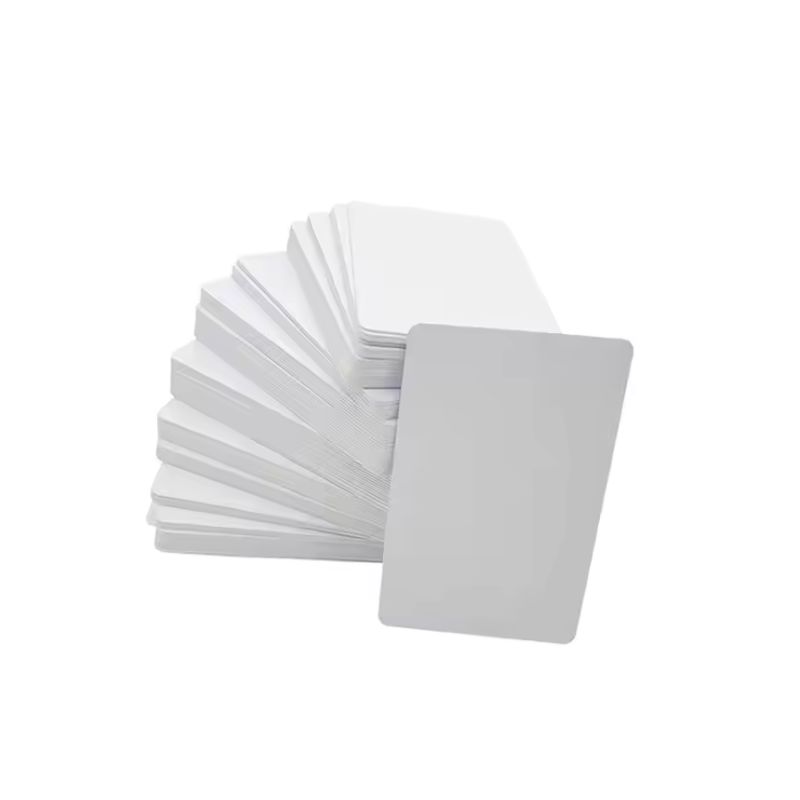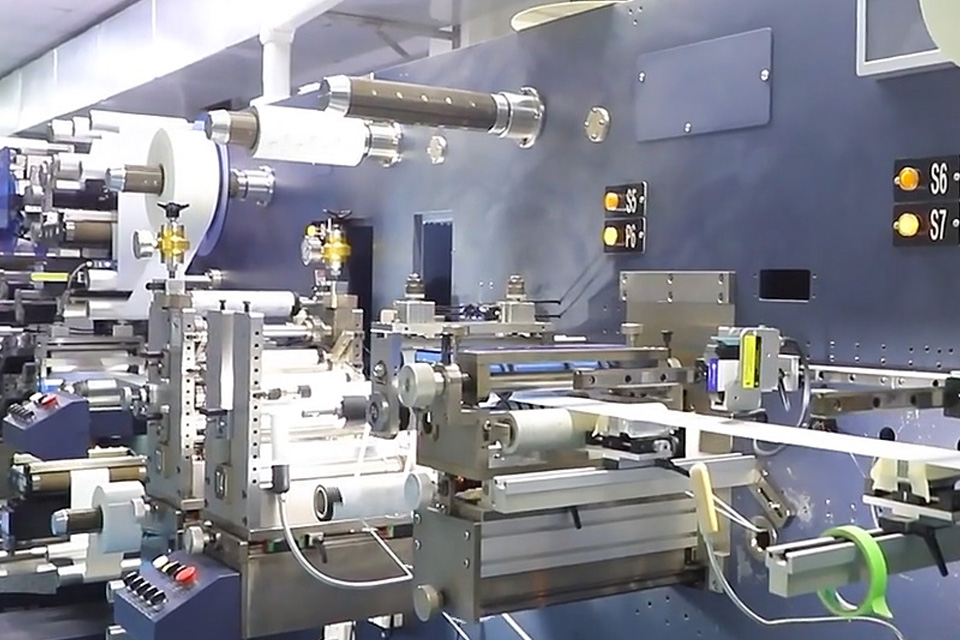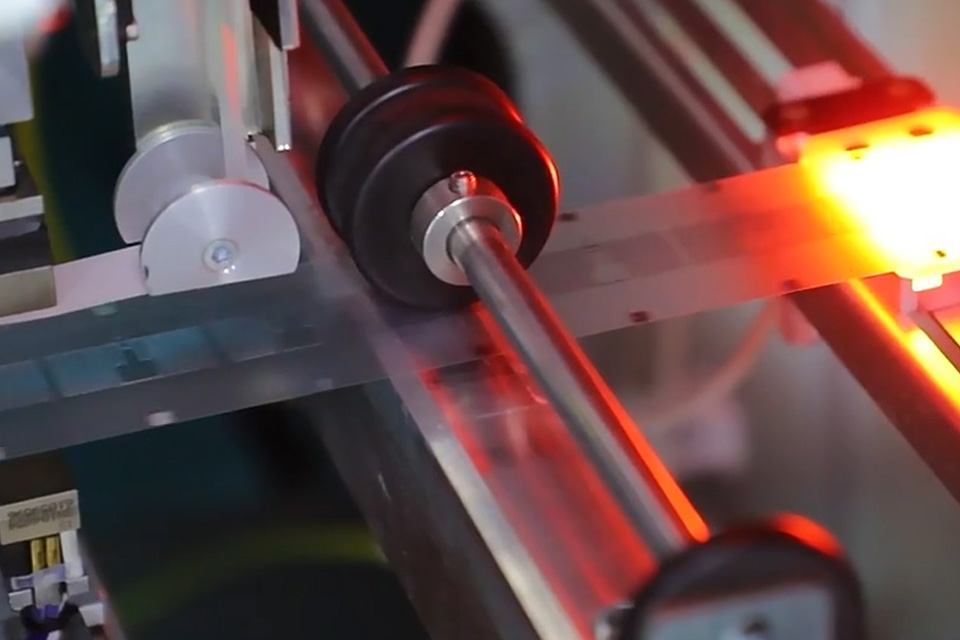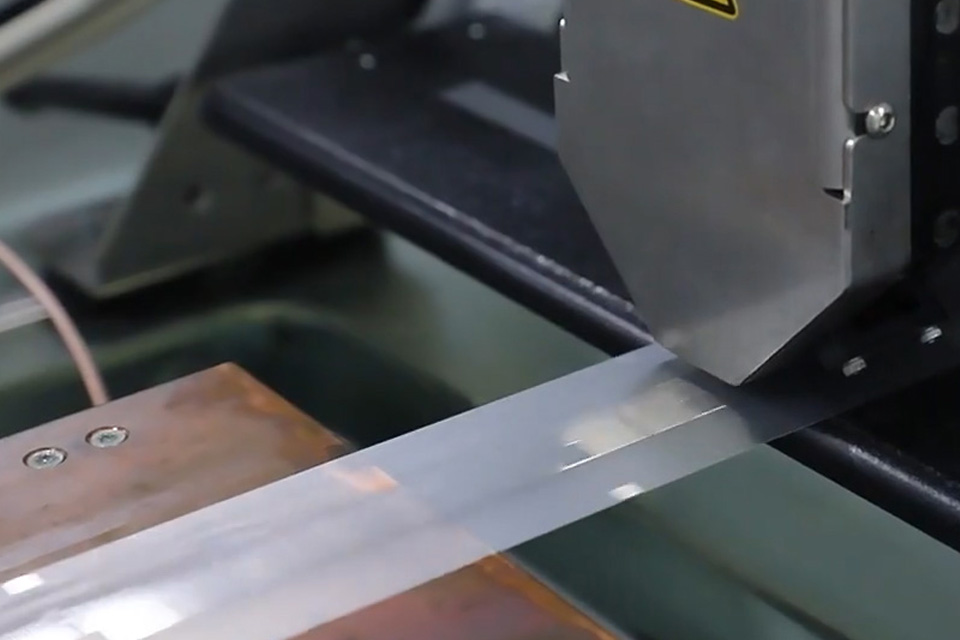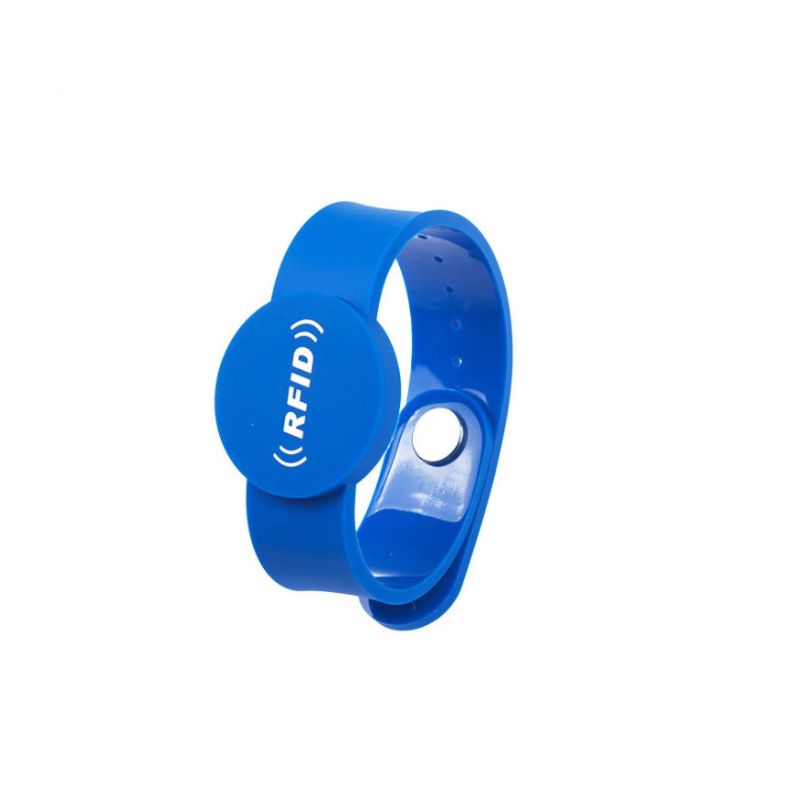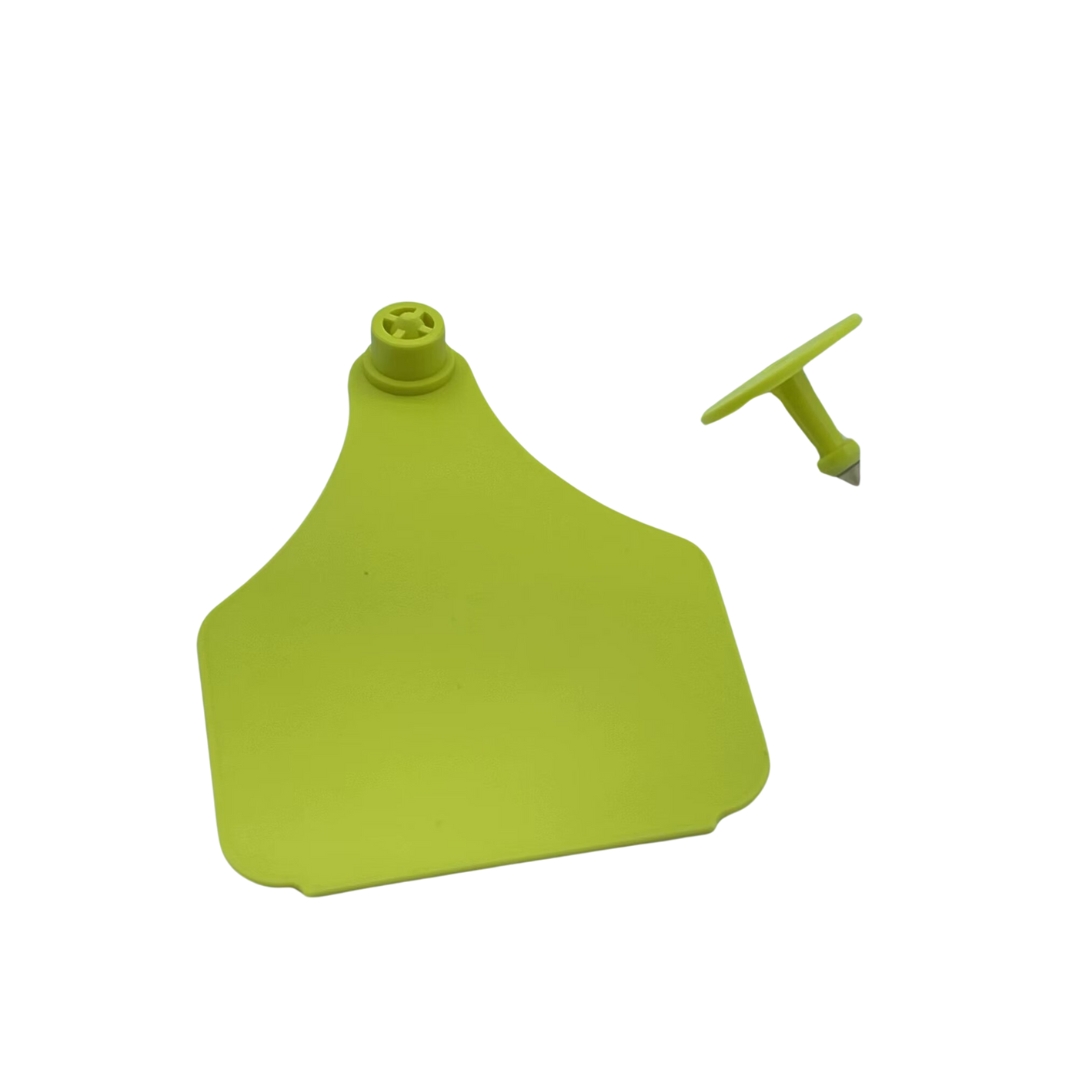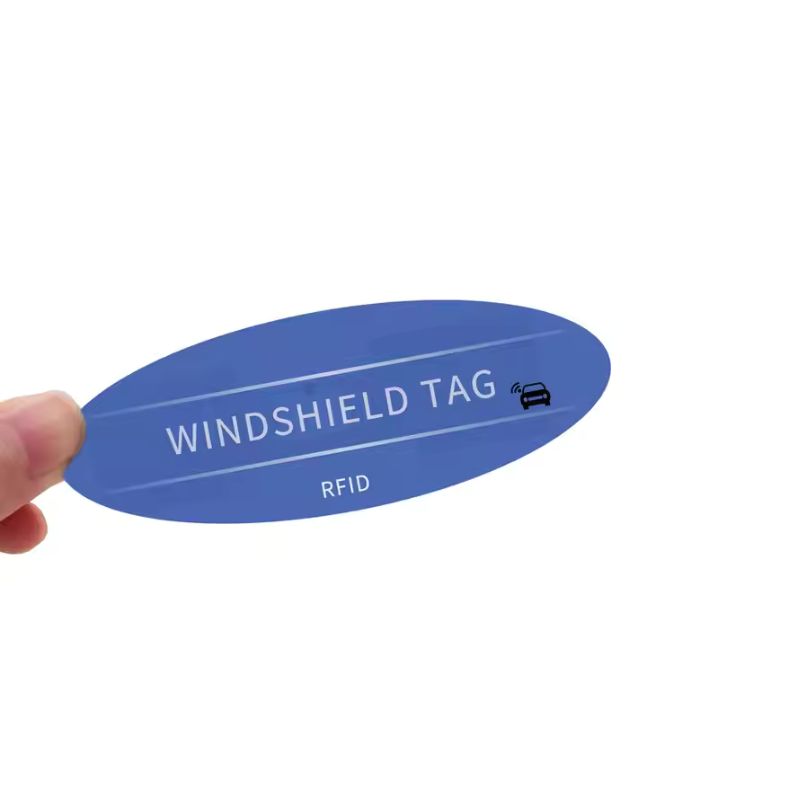
Printable RFID Business Card RFID Contactless Smart Card
Printable RFID Business Card – Contactless Smart Card for Digital Networking
Make a lasting impression with a printable RFID business card—a modern contactless smart card embedded with RFID or NFC technology. These cards allow users to instantly share digital contact info, website links, or social profiles with a simple tap on a smartphone or NFC reader.
Crafted from durable PVC and fully customizable with high-resolution printing, these RFID business cards are ideal for tech-savvy professionals, events, digital marketing, and access control.
RFID Business Card Key Features
- Embedded RFID/NFC Chip – Enables contactless tap-to-share functionality.
- Printable PVC Surface – Glossy or matte finish, compatible with full-color designs.
- Smart Card Technology – Tap to share LinkedIn, websites, vCards, or digital business profiles.
- Reusable and Programmable – Write, edit, or update chip data as needed.
- CR80 Standard Size – Credit-card format for easy handling and branding.
Real Use Case: Executive Team at a Marketing Firm
A creative agency in Singapore upgraded its networking strategy by switching to custom RFID business cards. Each executive received a card with a personal Card and QR code, directing contacts to their portfolio or LinkedIn profile. The result was more engagement at trade shows and a tech-forward brand image that impressed clients and partners.
Technical Specifications
| Attribute | Details |
| Material | Premium PVC (Glossy/Matte) |
| Size | 85.5 × 54 mm (CR80 standard) |
| Thickness | 0.84 mm |
| Chip Options | NTAG213, NTAG215, NTAG216, MIFARE Classic, F08 |
| Frequency | 13.56 MHz |
| Read Range | 2–10 cm |
| Memory Capacity | NTAG213: 144 bytes / NTAG215: 504 bytes / NTAG216: 888 bytes |
| Printing Method | Offset, thermal transfer, inkjet, UV |
| Compatibility | Android phones, iPhones (iOS 13+), NFC readers |
| Durability | Waterproof, scratch-resistant, 100,000+ read/write cycles |
Applications
- Digital Business Cards for Networking
- Smart Name Badges for Events
- Retail & Loyalty Cards
- Secure Access Control Cards
- Tap-to-Website / Tap-to-Connect Cards
- Employee ID or Corporate Visitor Passes
Make Every Connection Count with Smart RFID Cards
Tired of old-school paper business cards? Upgrade to smart, stylish, and shareable RFID business cards today.
📦 Bulk discounts for teams & agencies
🎨 Free design preview available
📲 Fast global delivery + expert support
📩 Request a Free Sample or Quote
Frequently Asked Question
The top questions about the RFID business card
These cards contain an embedded RFID/NFC chip that transmits data when tapped on a compatible device—like a smartphone or NFC terminal.
Absolutely. You can embed links to portfolios, event check-ins, menus, or product pages.
Yes, both sides can be fully printed in high resolution using offset or thermal printing.
MOQ is 100 cards. Bulk pricing is available for larger orders.
Hot To Customize RFID Tags
Know the customization process for RFID tags
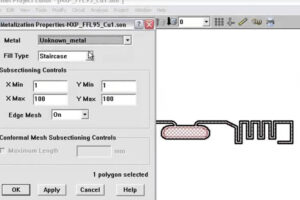
Size & Shape
Send your requirements on size and shapes. Tags are typically designed in simple shapes and sizes to match the internal antenna. However, they can also be customized in various sizes and shapes to best fit the intended application and the asset being tagged. For instance, RFID hang tags can be customized in size, shape, and attachment method to perfectly suit specific applications.
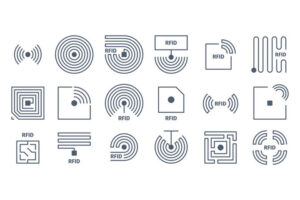
Layout & Chips
In the label format designer, select the layout that matches the type and size of the RFID label you wish to create. Our factory provides a variety of label templates, including RFID-specific options. We also offer a range of RFID chips tailored to meet your specific requirements.
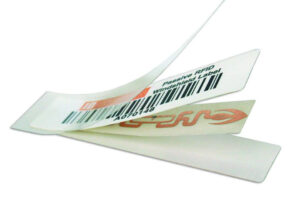
High Customization
Custom tags are designed from the ground up to meet the needs of specific applications, with unique variables for nearly every option listed below. A semi-custom tag typically starts as a standard tag but offers additional customization options, such as custom printing, encoding, or specific backings and attachment methods.
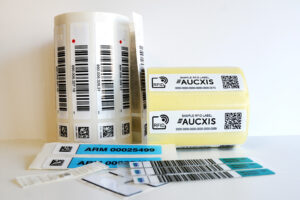
Sample Confirmation
Before proceeding with full-scale production, we offer a sample confirmation process to ensure that the RFID tags meet your exact specifications and application requirements.
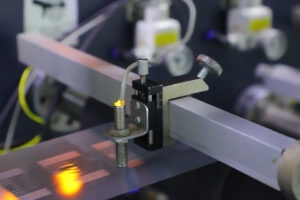
Mass Production
Our mass production process for RFID tags is designed to deliver high-quality, reliable products at scale, ensuring that your business has a steady and consistent supply of RFID solutions tailored to your needs. Leveraging state-of-the-art manufacturing facilities and advanced technology, we maintain efficiency and precision throughout the production cycle.
RFID Tags Application
Use customized RFID tags in different industies.
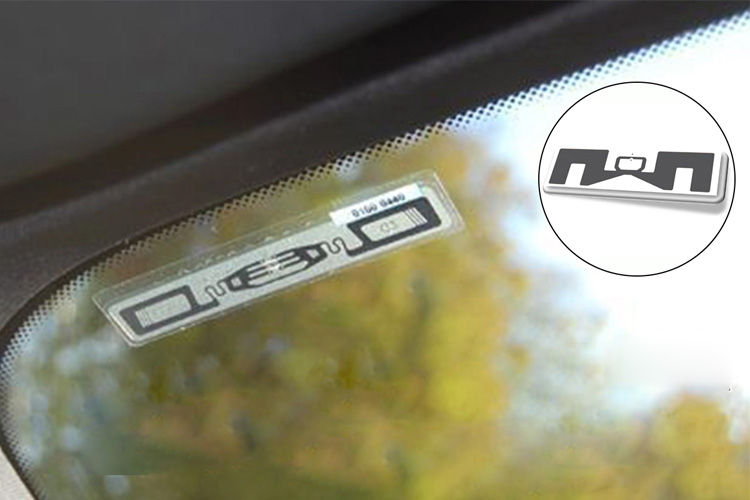
RFID Vehicle Tags
Vehicles with RFID tags enable secure access to gated areas. RFID tags also streamline truck weighing for efficient billing.
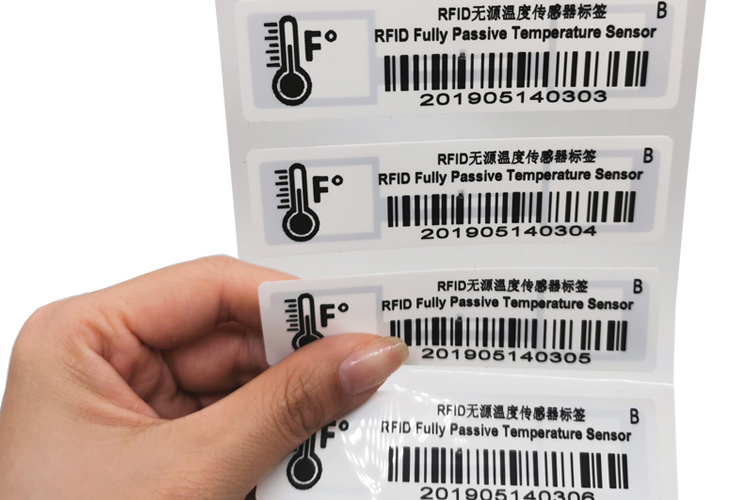
Temperature Sensor Tags
RFID temperature sensors, used in industries like steel, send data to alert users of unsafe conditions via RFID readers.
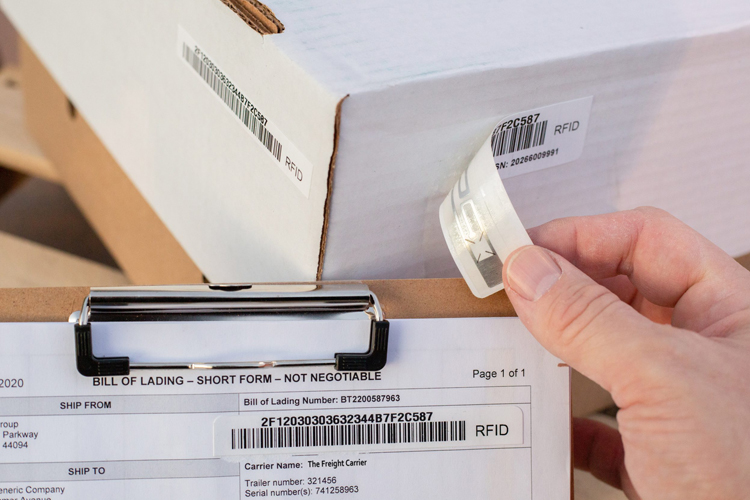
RFID Supply Chain Tags
RFID tags for supply chain visibility track products, showing when a box, pallet, or container moves from one facility to another.
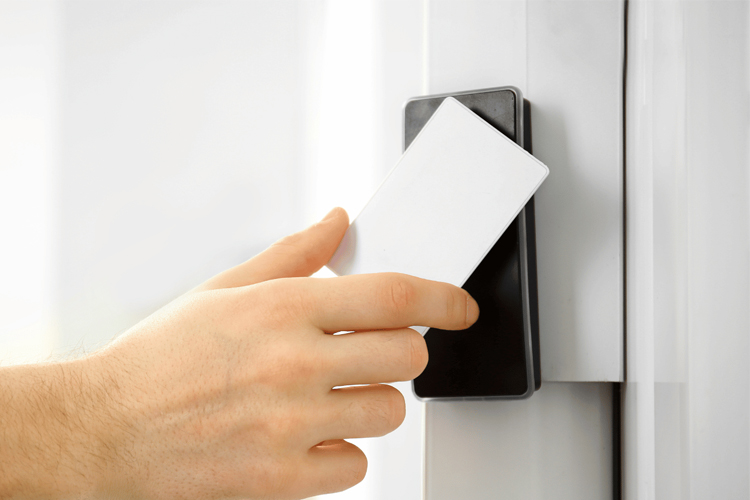
RFID Personnel Tracking
RFID strengthens access security: employee badges for workspace entry, hotel wristbands for pool access.
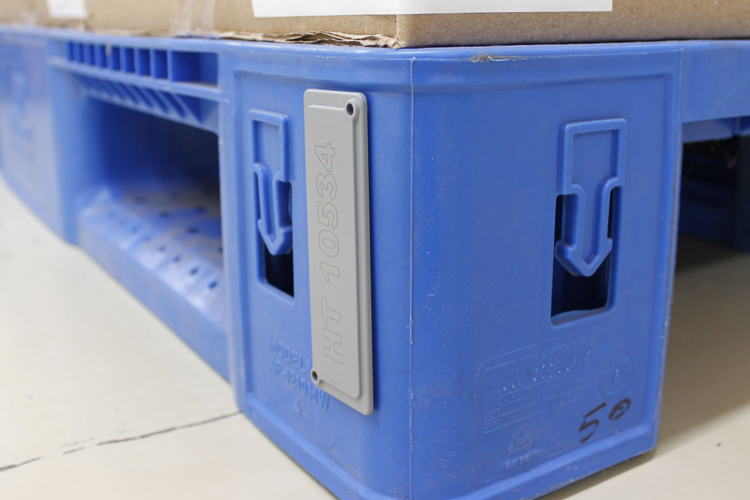
RFID Pallet Tracking Tags
Our RFID tags are ideal for tracking pallets and containers, offering durable, low-profile solutions for warehouse management.
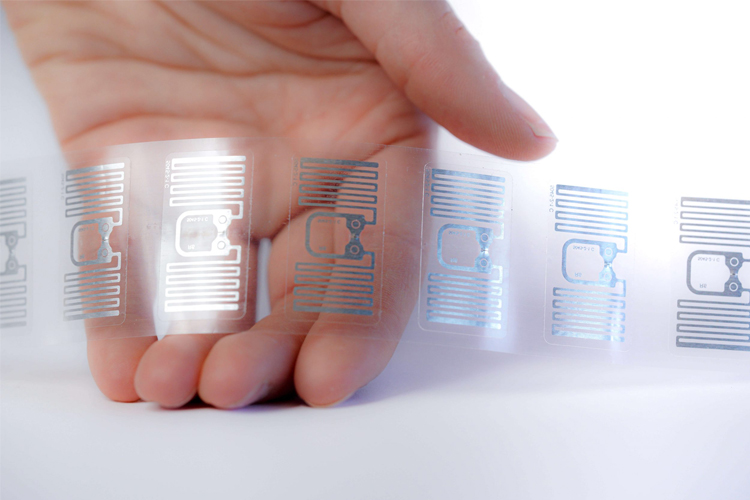
Custom RFID Tags & Labels
Our factory supplies custom RFID tags and OEM hardware solutions for unique needs when standard RFID products aren't available.
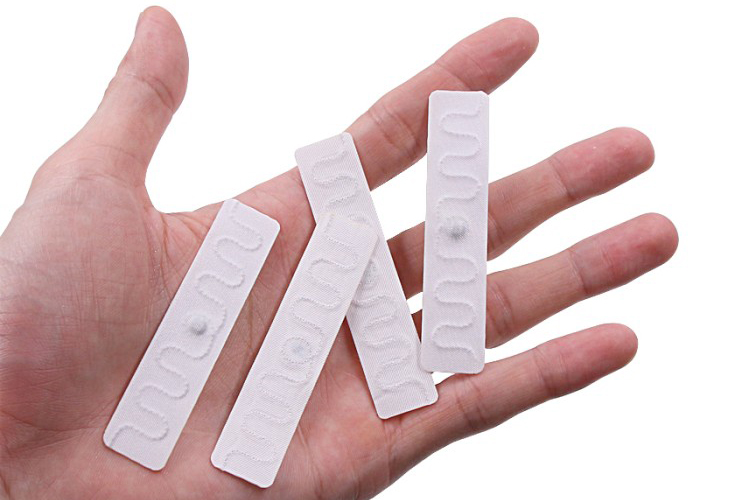
RFID Laundry Tags
Our RFID laundry tags, with a soft rubber casing, are flexible and durable, surviving 200 wash cycles and 60 bars of pressure.
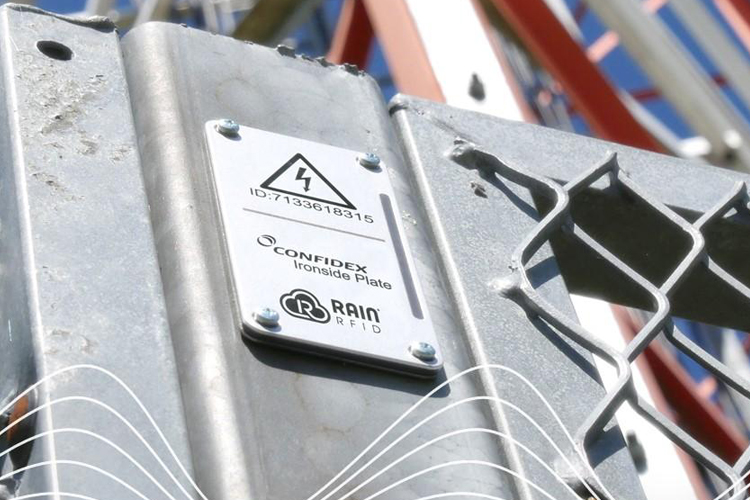
Industrial RFID Tags
We provide rugged industrial RFID tags and readers for demanding applications. Our tags withstand all weather conditions.

Animal RFID Tags
RFID tags track animals and pets using ear tags or injectable ampoules. Ear tags can be custom-printed and come in various colors.
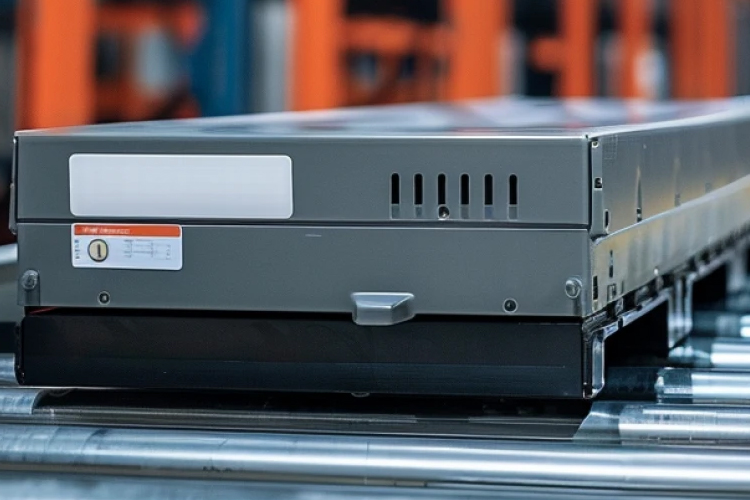
RFID Asset Tracking
RFID tags for asset tracking, like file servers, rental equipment, streamline inventory, asset management, enabling quick location, tracking.
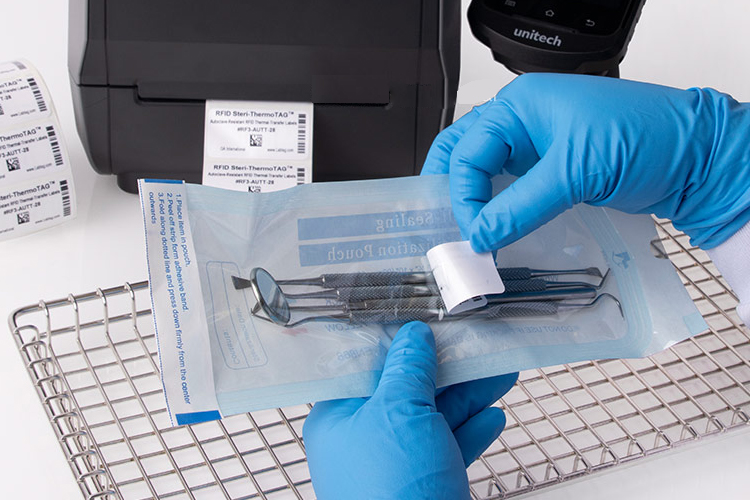
Consumables RFID Tags
RFID counterfeit tags on consumables, with a reader in the machine, verify authenticity and prevent counterfeit use.
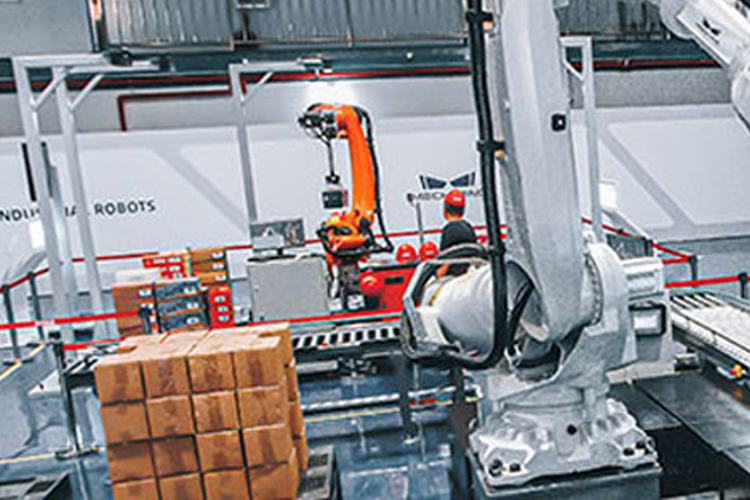
Manufacturing RFID Systems
RFID tags are used on almost all products—apparel, furniture, appliances, and cars—and are crucial for automated manufacturing systems.
Why Choose Us
As an original manufacturer with over 13 years of experience, we specialize in designing and manufacturing passive RFID (NFC, HF, and UHF) tags for inventory, laundry, access control, identification, and industrial automation management applications.
We are a pioneering leader in RFID technology and smart product solutions. For nearly 20 years, we have been at the forefront of custom RFID and NFC technology, offering innovative solutions in every imaginable form. Our expertise lies in developing and producing RFID/NFC products that are tailored to meet your specific requirements.
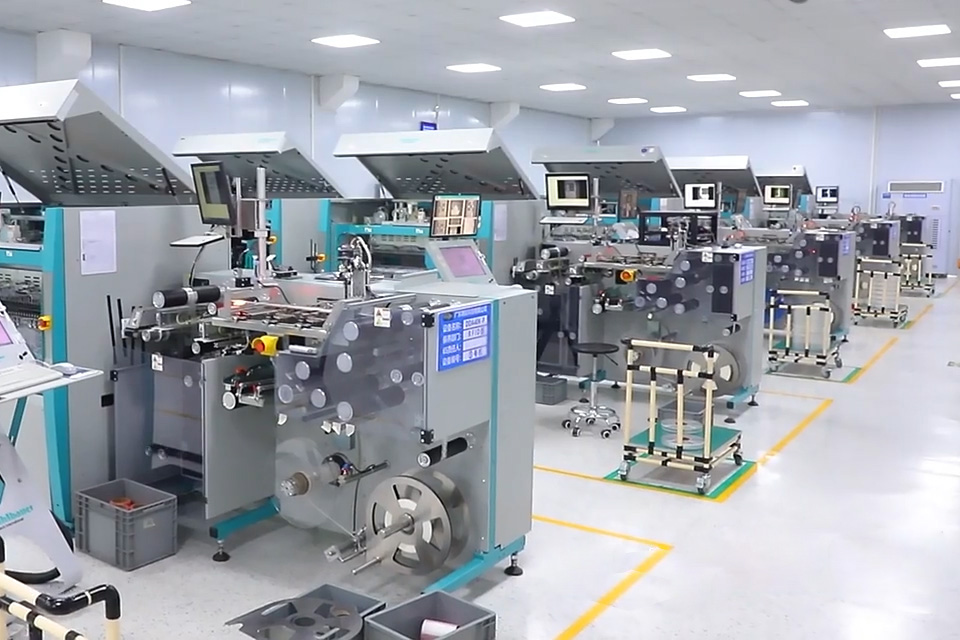
As the world’s leading RFID supplier, our factory is passionate about RFID technology. We deliver a wide range of products, including NFC tags, NFC cards, RFID/NFC labels, RFID inlays, various apparel tags, laundry tags, and RFID devices, to clients around the globe. Our RFID products are widely used in marketing campaigns, healthcare monitoring, workforce management, stock control, access control, apparel systems, laundry systems, inventory systems, IoT systems, and security applications.
Our Benefits
We provide products with competitive pricing and reliable quality, backed by an after-sales warranty. Whether you are a distributor, system integrator, or end-user, you will find the right RFID and related products here, ensuring that your company gains tangible benefits.
We have grown into a company with over 200 team members, including a production department, R&D center, sales department, technical support, and after-sales service. Understanding that time is of the essence, we can fulfill customized orders within just 5 days. Our dedicated team of over 100 factory staff ensures a stable supply and fast delivery for all our orders.
Related Products
Customize any RFID tags from our factory to meet your requirements.

